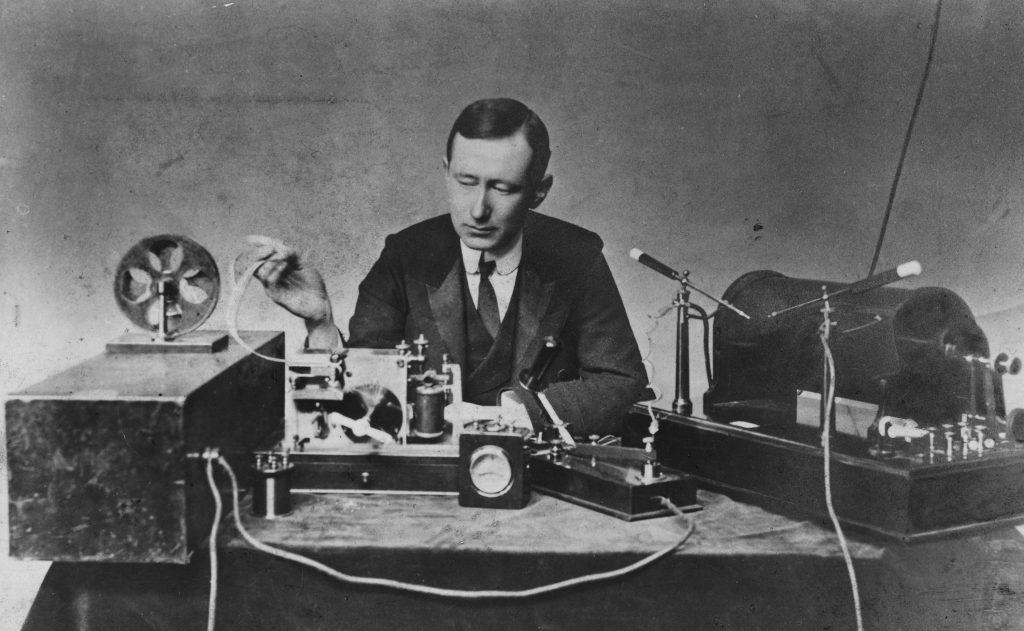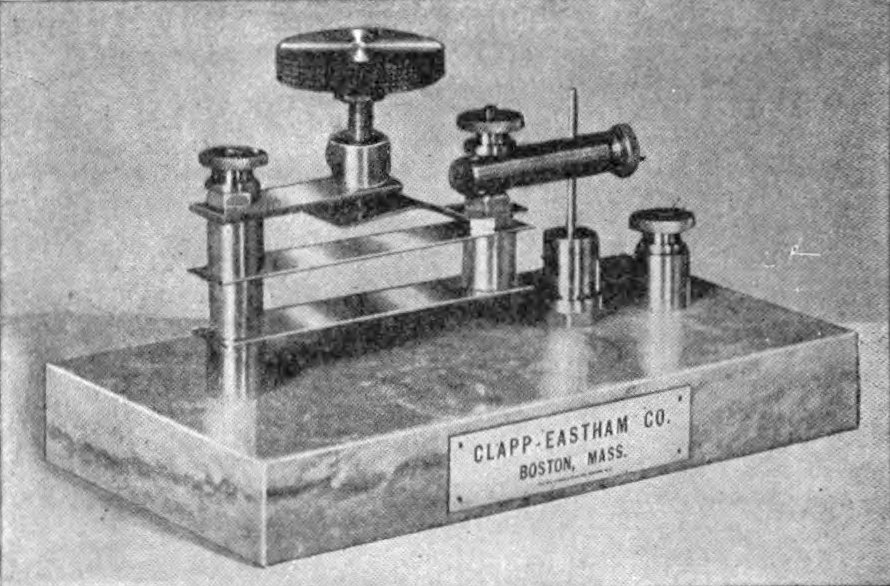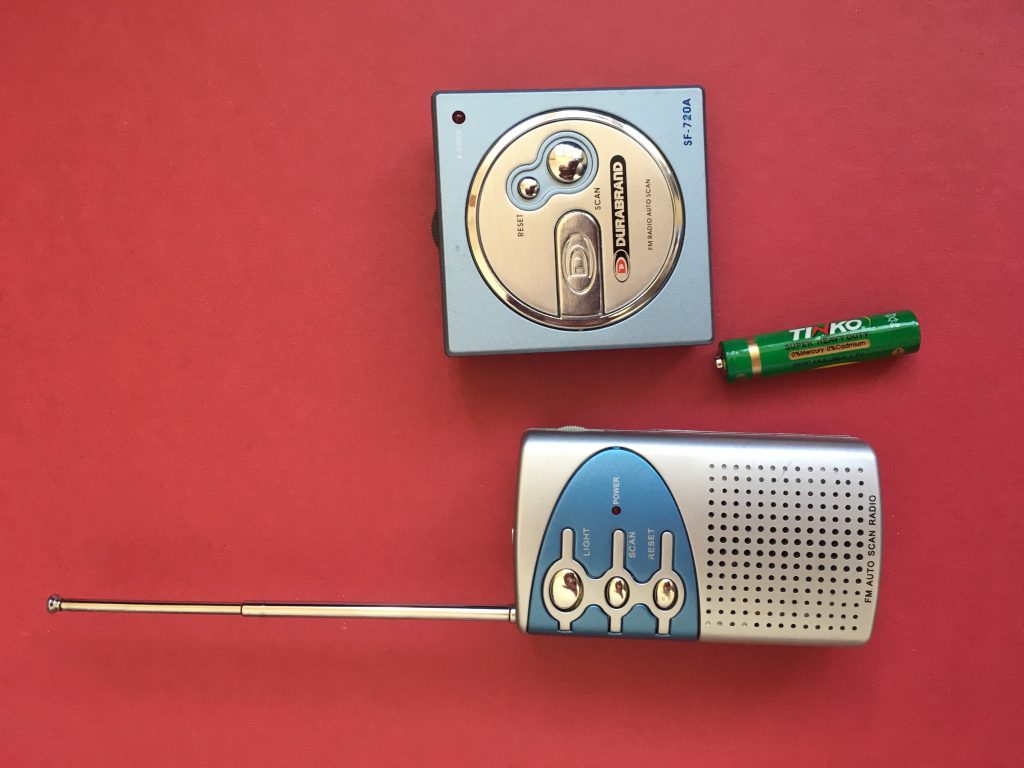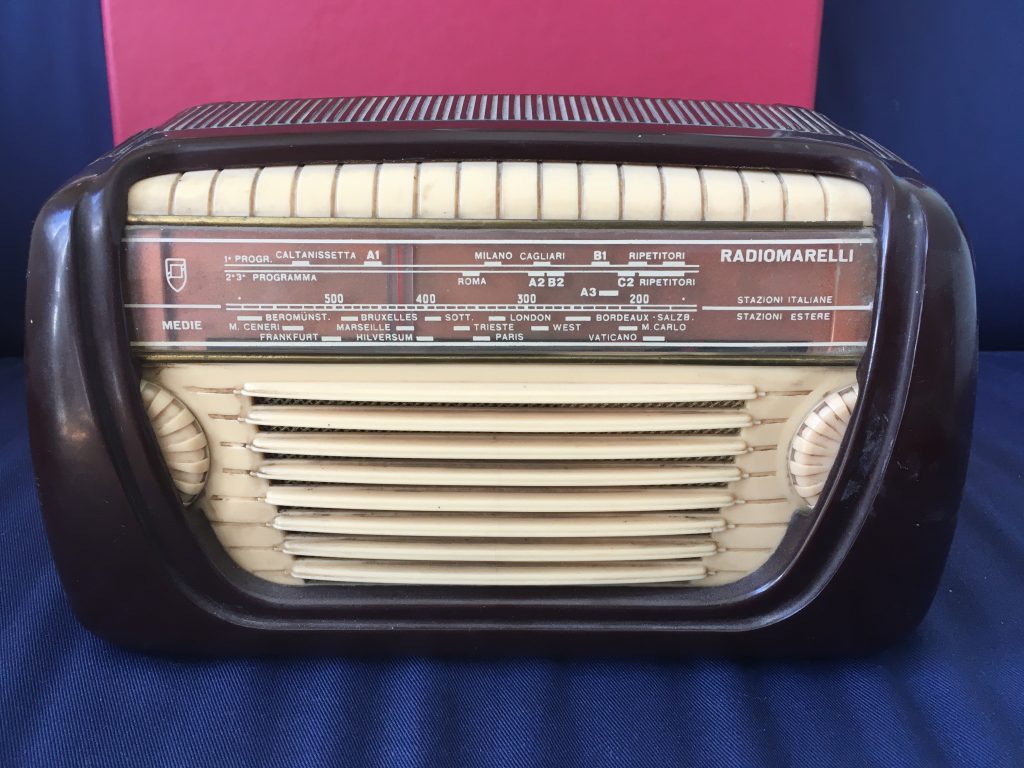When Guglielmo Marconi started practical experiments with wireless communication, he had a problem to solve: How could one communicate with ships on sea, or with a remote place somewhere on this planet, where no cable telegraph line had yet arrived? Fast communication already then was essential for business because a lot of time could be saved. The first „radio“ transmissions were business communication, in the form of telegrams transmitted in Morse code.
Marconi’s practical work started in 1895 and was based on research by Ferdinand Braun, Heinrich Hertz, Nikola Tesla and Alexander Popow. In 1903, the first trans-Atlantic messages were exchanged.

Published on LIFE / Public domain
Source
On Christmas Eve 1906, the first program consisting of talk and music was transmitted by researchers in Brant Rock (Massachusetts). Listeners were seamen on ships in the Atlantic.
Tube-based transmitters were patented in 1913, and the first real radio programme was broadcast in November 1919 in the Netherlands, from a private apartment. Commercial radio started 1920 in Pittsburgh (USA), and Westinghouse provided the first receivers. Between 1920 and 1924, radio transmissions started also in Europe. This website has many dates and details from this period.
In the beginning, the number of listeners was really low. Not only did you have to buy or construct the equipment, but in some countries you also needed a license to be allowed to listen. By 1926, easy-to-use tube-based receiver had replaced the “crystal detector” which had required some patience in tuning and a headphone for listening.

Alfred Powell Morgan / Public domain
Source
During WW2, radio was popular – not only because it was the cheapest form of entertainment – but as it reached everyone, it was used as a means of mass communication and propaganda. After the war, radio continued as mass media, entertaining, informing and educating the listeners. While tube radios were still used in the 1960s, the invention of the transistor allowed small receivers that could run on battery, and the radio made its way into the car and into our pockets.

Own source

Own source
Günter Lorenz
